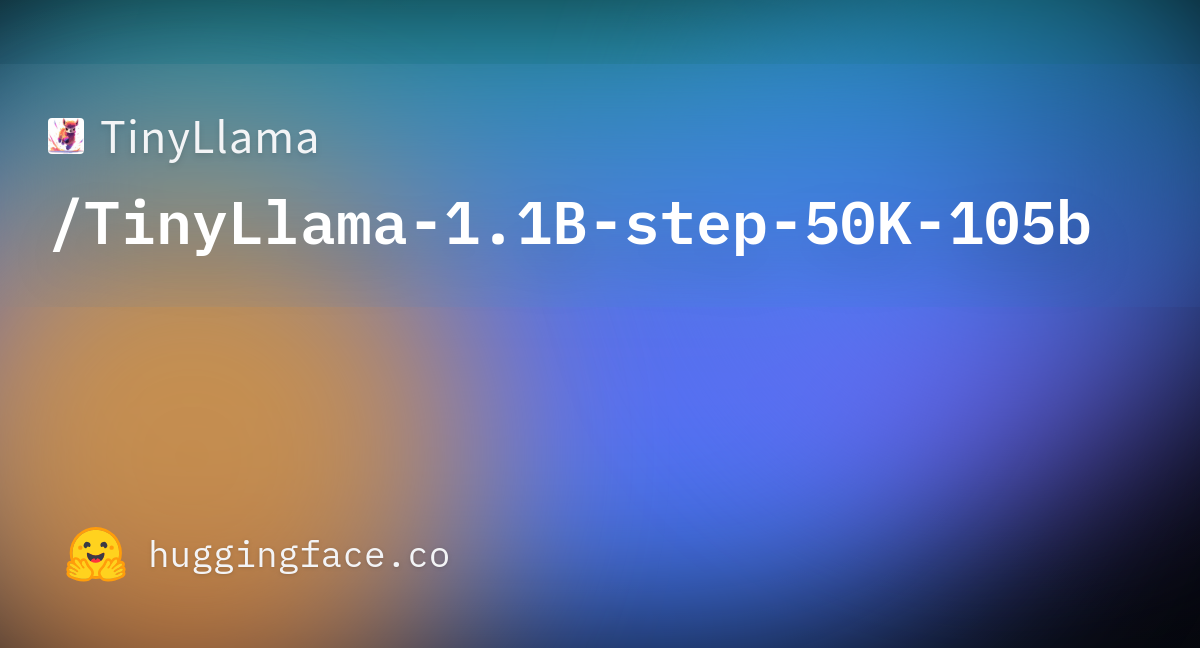TinyLlama, an open-source language model, stands out in the world of artificial intelligence. It's a compact, efficient alternative to larger models like Microsoft's Pi 2 and Llama 2. TinyLlama demonstrates that powerful language processing capabilities don't always require massive scale.
Interested in testing out Open Source LLMs Online?
Try Anakin AI! Anakin AI is your go to place for All Open Source LLM Models, you create any No Code AI Apps with your favourite AI Model with Ease!

What is TinyLlama?
The trend in AI is shifting towards smaller, more efficient language models. TinyLlama exemplifies this movement. Its open-source nature is crucial, making advanced AI technology more accessible and adaptable.
TinyLlama is a compact yet powerful language model with several key features:
- Size and Parameters: It has 1.1 billion parameters, offering a balance between computational efficiency and model complexity.
- Architecture: Mirrors Llama 2, ensuring compatibility with many existing applications.
- Training Data: Utilizes diverse datasets like Slimpajama (natural language) and Starcoder (coding languages).
- Optimization Techniques: Incorporates innovations like grouped query attention and rotary positional embeddings for improved performance.
- Open Source: Fully open-source, enhancing accessibility and fostering community development.
This approach by TinyLlama democratizes AI, encouraging broader participation and innovation in the field. TinyLlama's launch is not just a technological milestone; it's a step towards more inclusive and collaborative AI development.
TinyLlama: a Technical Overview
TinyLlama's architecture is ingeniously crafted, sharing similarities with the Llama 2 model but with distinct features.
For example, TinyLlama employs advanced techniques like grouped query attention and rotary positional embeddings. It also utilizes RMS Norm for pre-normalization, akin to batch normalization in computer vision.
Here's a deeper look:
1. Architecture of TinyLlama
- Multi-GPU and Multi-Node Support: Utilizes Fully Sharded Data Parallel (FSDP) for distributed training across multiple GPUs and nodes.
- Advanced Optimizations: Incorporates Flash Attention 2, fused layernorm, fused swiglu, fused cross entropy loss, and fused rotary positional embedding, enhancing speed and reducing memory usage.
- High Throughput: Achieves a remarkable throughput of 24k tokens per second per A100-40G GPU.
- Efficient Training: Capable of training a chinchilla-optimal TinyLlama (1.1B parameters, 22B tokens) in just 32 hours with 8 A100 GPUs.
- Reduced Memory Footprint: Optimizations enable the model to fit into 40GB GPU RAM, allowing training with a large batch size per GPU.
- Comparative Efficiency: Outperforms similar models like Pythia-1.0B and MPT-1.3B in training efficiency.
2. How TinyLlama is Trained?
- A blend of natural language and code data, primarily from the Slimpajama and Starcoder datasets.
- Emphasizes a 7:3 ratio of natural language to code data, ensuring a balanced learning process.
3. What Datasets are Used for Training TinyLlama?
- TinyLlama utilizes the Slimpajama dataset, focusing on a rich variety of natural language data.
- Incorporates Starcoder dataset, encompassing code-related data from numerous programming languages.
TinyLlama Performance & Benchmarks
TinyLlama, a state-of-the-art machine learning model, stands out for its remarkable efficiency and speed, particularly in training and inference processes. Our latest benchmarks reveal the exceptional performance of TinyLlama, especially when compared to other models in the industry.
Training Speed and Efficiency
The core achievement of TinyLlama lies in its training speed. Thanks to a series of advanced optimizations, TinyLlama achieves a throughput of 24k tokens per second per A100-40G GPU. This impressive figure translates to 56% model flops utilization without activation checkpointing, and we anticipate even better performance on A100-80G GPUs. This high throughput means that training a model like TinyLlama, which has 1.1 billion parameters and requires processing 22 billion tokens, can be completed in just 32 hours using 8 A100 GPUs.
The table below highlights the GPU hours taken for training 300 billion tokens compared to other models:
| Model | A100 GPU Hours (300B Tokens) |
|---|---|
| TinyLlama-1.1B | 3456 |
| Pythia-1.0B | 4830 |
| MPT-1.3B | 7920 |
Inference Throughput
TinyLlama not only excels in training but also demonstrates significant efficiency during inference. The model's design, featuring grouped query attention, contributes to its high speed in this phase. The following table presents some throughputs measured under different frameworks and settings:
| Framework | Device | Settings | Throughput (tokens/sec) |
|---|---|---|---|
| Llama.cpp | Mac M2 16GB RAM | batch_size=1; 4-bit inference | 71.8 |
| vLLM | A40 GPU | batch_size=100, n=10 | 7094.5 |
These benchmarks clearly indicate that TinyLlama is not only a robust model for large-scale machine learning tasks but also a highly efficient option in terms of resource utilization and speed, setting new standards in the field of machine learning and artificial intelligence.
Practical Applications
TinyLlama shines in its potential for deployment on edge devices. Its compact size makes it ideal for applications where space and processing power are limited. For instance:
- Edge Computing: TinyLlama can run efficiently on small-scale devices, offering real-time language processing capabilities in environments where connectivity is limited or non-existent.
- Chat and Creative Writing: As demonstrated, TinyLlama performs admirably in chatbot applications and creative writing tasks, making it suitable for interactive applications in video games or virtual assistants.
Want to test out TinyLlama? Here's the Huggingface Card for TinyLlama:

Conclusion
The future of small language models like TinyLlama looks promising. They represent a shift towards more accessible and versatile AI tools. In conclusion:
- Trend Toward Accessibility: TinyLlama is part of a growing trend of open-source, small-scale models that democratize AI, making advanced capabilities available to a broader audience.
- Versatility and Innovation: The success of TinyLlama underscores the potential for innovation in AI, even in smaller packages, paving the way for more specialized and efficient AI applications in various fields.
Interested in testing out Open Source LLMs Online?
Try Anakin AI! Anakin AI is your go to place for All Open Source LLM Models, you create any No Code AI Apps with your favourite AI Model with Ease!
